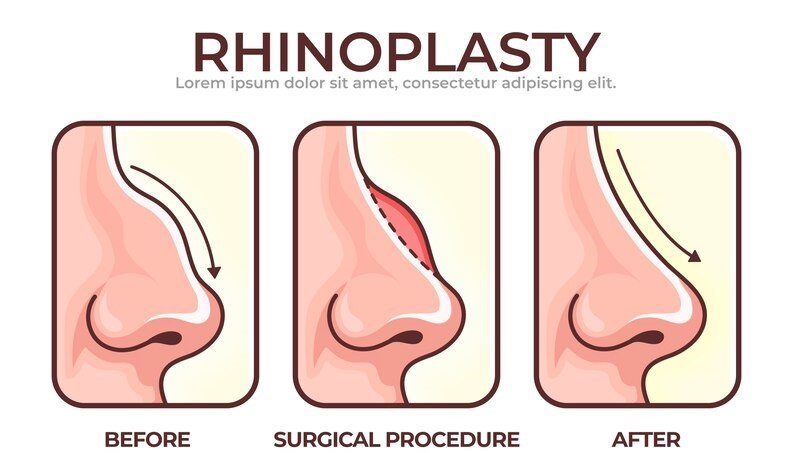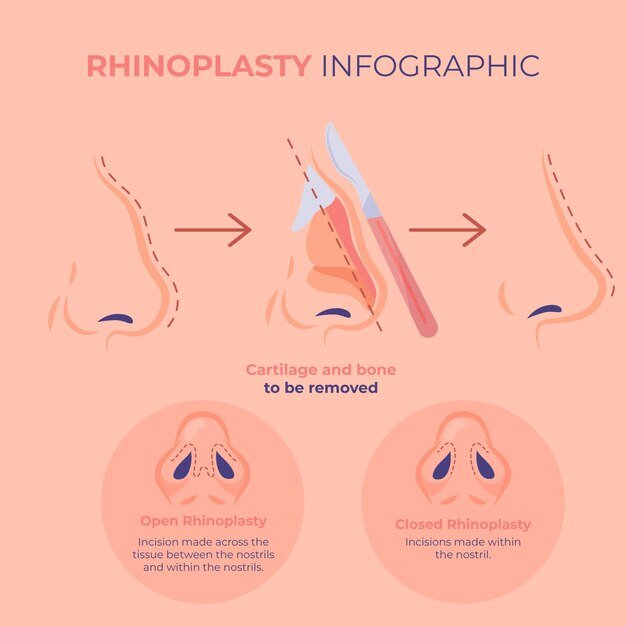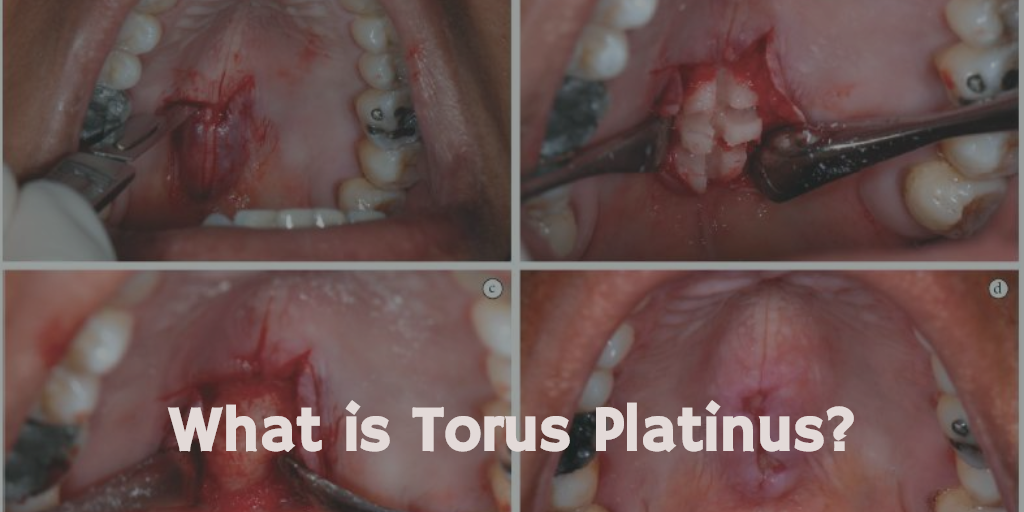Let’s have a look at the differences between Closed Rhinoplasty Vs Open Rhinoplasty. Closed Rhinoplasty is characterized by internal incisions, concealed scars, ideal for subtle changes. On the other hand, open Rhinoplasty includes external incision, direct visibility, suited for complex alterations.
Rhinoplasty, commonly known as a “nose job,” is a surgical procedure aimed at reshaping the nose to harmonize with facial features and, in some cases, improve nasal functionality. This transformative procedure has evolved over the years, giving rise to various techniques, each with its unique advantages. Closed rhinoplasty and open rhinoplasty are the principal techniques used by surgeons to achieve these objectives. Let’s delve into the specifics of each technique and understand the nuances that set them apart.
Introduction to Rhinoplasty

Rhinoplasty, commonly known as a “nose job,” is a surgical procedure aimed at reshaping and enhancing the appearance of the nose and thus treating asymmetrical face. It’s a transformative cosmetic surgery that can not only improve the aesthetics of the nose but also address functional concerns such as breathing difficulties. By making precise adjustments to the nasal structure, rhinoplasty can harmonize the nose with the overall facial features, boosting self-confidence and creating a balanced facial profile. The procedure has evolved over the years, offering various techniques tailored to individual needs, with the ultimate goal of achieving natural-looking and lasting results.
Introducing Closed Rhinoplasty Vs Open Rhinoplasty

Understanding Closed Rhinoplasty
Closed rhinoplasty, also referred to as endonasal rhinoplasty, involves making incisions solely within the nasal passages, eliminating any external scars. This technique grants surgeons access to the nasal structure through concealed incisions, enabling them to make precise adjustments. Notable for creating subtle yet impactful changes, closed rhinoplasty is generally associated with reduced swelling and a quicker recovery period. The technique’s finesse lies in the surgeon’s ability to work through these internal incisions, meticulously reshaping the cartilage and bone to achieve the desired outcome.
The Approach of Open Rhinoplasty
Open rhinoplasty, alternatively, involves a small incision made across the columella, the tissue strip between the nostrils. This approach provides direct visibility and access to the nasal framework. Although initial swelling might be more pronounced compared to closed rhinoplasty, open rhinoplasty allows for intricate modifications and is preferred for cases requiring significant reshaping or structural adjustments. The external incision grants the surgeon an unobstructed view of the nasal structures, facilitating more complex maneuvers and extensive corrections.
Closed Rhinoplasty Vs Open Rhinoplasty: Side Effects

Closed Rhinoplasty Potential Side Effect: Risk of Overcorrection
Closed rhinoplasty, while generally safe, carries a slight risk of overcorrection. Due to the limited view provided by internal incisions, there’s a possibility that the surgeon might excessively modify the nasal structures, resulting in an overly dramatic or unnatural appearance. To mitigate this risk, it’s essential to choose a skilled and experienced surgeon who can accurately assess your features and recommend appropriate adjustments.
Open Rhinoplasty Potential Side Effect: Prolonged Swelling
Open rhinoplasty, which involves a small external incision, can lead to slightly prolonged swelling compared to closed rhinoplasty. The direct access to the nasal structures afforded by the external incision can result in more tissue trauma, potentially causing increased swelling that takes longer to subside. However, it’s important to note that this swelling is typically temporary and should gradually diminish over time.
Closed Rhinoplasty Vs Open Rhinoplasty: A Comparative Study of Techniques
Surgical Incisions: Concealed vs. External
Closed rhinoplasty entails internal incisions that are hidden from view, while open rhinoplasty necessitates a minor external incision on the columella. The discreet nature of closed rhinoplasty’s incisions often makes them imperceptible, a highly appealing factor for those concerned about visible scarring.
Visibility of Surgical Area: Enhanced Precision vs. Direct Visualization
Open rhinoplasty offers superior surgical visibility due to the unobstructed view of the nasal structures. This direct line of sight allows the surgeon to work with a heightened level of precision, making intricate adjustments with confidence.
Precision and Control: Subtle Changes vs. Complex Alterations
Closed rhinoplasty allows for precise modifications suitable for subtle refinements, whereas open rhinoplasty provides greater control for intricate changes. The ability to manipulate the nasal structures directly gives open rhinoplasty an edge in cases where substantial alterations are required.
Scarring: Minimal vs. Well-Managed
Closed rhinoplasty leaves no external scars, while open rhinoplasty results in a small, well-concealed scar on the columella. It’s worth noting that the columellar scar typically fades over time and becomes virtually undetectable, especially when entrusted to a skilled surgeon.
Closed Rhinoplasty Vs Open Rhinoplasty: Recovery and Downtime
Both techniques involve a recovery phase during which swelling and bruising gradually subside. Closed rhinoplasty often leads to a shorter downtime due to its less invasive nature. However, it’s essential to keep in mind that individual healing rates may vary, and patience is key to seeing the final results.
Longevity and Results: Lasting Transformations
The results achieved with both closed and open rhinoplasty are enduring, ensuring that your desired changes remain intact over time. As the swelling dissipates and the nasal tissues settle into their new configuration, the true outcome of the procedure becomes more apparent. Whether you opt for closed or open rhinoplasty, the goal is to achieve natural-looking results that seamlessly blend with your facial features.
Choosing the Right Technique: Tailoring to Individual Needs
Selecting between closed and open rhinoplasty depends on various factors, including the complexity of desired changes, anatomical considerations, and the surgeon’s expertise. A thorough consultation with an experienced rhinoplasty surgeon is essential to determine which technique aligns with your goals and addresses your unique nasal structure.
Closed Rhinoplasty Vs Open Rhinoplasty: Factors Influencing Choice
Nasal Anatomy: Simple vs. Complex Changes
Closed rhinoplasty is well-suited for cases where minor adjustments are required, such as refining the nasal tip or smoothing out small irregularities. The limited access provided by internal incisions is often sufficient for these changes. On the other hand, open rhinoplasty is better suited for cases involving more complex alterations, such as addressing significant nasal asymmetry or correcting functional issues.
Desired Outcome: Subtle Refinement vs. Dramatic Transformation
The level of change you desire plays a significant role in determining the appropriate technique. If you’re seeking subtle refinements to enhance your nasal aesthetics without drastically altering your appearance, closed rhinoplasty could be the ideal choice. Conversely, if you have specific concerns about the shape, size, or functionality of your nose that require more extensive adjustments, open rhinoplasty offers the flexibility needed to achieve a dramatic transformation.
Surgeon’s Expertise: Proficiency and Skill
Perhaps one of the most critical factors influencing your choice of technique is the expertise of your chosen surgeon. An experienced rhinoplasty specialist will assess your unique facial features, discuss your goals, and recommend the technique that aligns best with your individual needs. It’s essential to choose a surgeon who has a proven track record of successful rhinoplasty procedures and a deep understanding of both closed and open techniques.
Closed Rhinoplasty Vs Open Rhinoplasty: Pros and Cons

Closed Rhinoplasty
Pros
- Concealed Incisions: Internal approach means no external scars.
- Faster Recovery: Generally leads to less swelling and quicker healing.
- Minimal Disruption: Limited disruption to nasal tissues.
Cons
- Limited Visibility: Surgeon’s view is restricted, which can be a challenge for complex adjustments.
- Precision Constraints: May not be suitable for intricate alterations.
- Overcorrection Risk: Slight risk of overdoing changes due to internal view.
Open Rhinoplasty
Pros
- Direct Visibility: Surgeon has direct line of sight, ideal for complex modifications.
- Greater Precision: Enables precise adjustments and intricate reshaping.
- Versatility: Suitable for addressing both aesthetic and functional concerns.
Cons
- External Scar: Involves a small visible scar on the columella.
- Prolonged Swelling: Tends to have longer initial swelling due to more tissue trauma.
- Longer Recovery: Recovery period can be slightly extended compared to closed rhinoplasty.
Both closed and open rhinoplasty techniques have their advantages and potential drawbacks. Your choice should be based on your desired outcome, nasal anatomy, and the expertise of your surgeon.
Making an Informed Decision: Closed Rhinoplasty Vs Open Rhinoplasty
Deciding between closed and open rhinoplasty is a decision that should be made collaboratively between you and your surgeon. During your consultation, openly share your goals, concerns, and expectations with your surgeon. They will conduct a thorough examination of your nasal anatomy, taking into account factors such as the thickness of your skin, the structure of your cartilage, and any previous nasal surgeries you may have undergone. Based on this assessment, they will recommend the technique that offers the best chance of achieving your desired outcome.
Closed Rhinoplasty Vs Open Rhinoplasty: Conclusion
In the world of rhinoplasty, there is no one-size-fits-all approach. The decision between closed rhinoplasty and open rhinoplasty is a nuanced one that should be guided by a deep understanding of your goals and an appreciation for the surgical techniques involved. Closed rhinoplasty offers the advantage of concealed incisions and quicker initial recovery, making it a preferred choice for those seeking minor refinements. Open rhinoplasty, while involving a small external scar and potentially more initial swelling, provides the surgeon with unparalleled visibility and control, making it the technique of choice for complex nasal reconstructions.
[youtube https://www.youtube.com/watch?v=__7bT4Frar8?si=hGBHkGakFw-d_1Um&w=560&h=315]Closed Rhinoplasty Vs Open Rhinoplasty: FAQs
Is closed rhinoplasty better than open?
The choice between closed and open rhinoplasty depends on individual factors. Closed rhinoplasty, with internal incisions, offers advantages like no visible scars and faster recovery. However, open rhinoplasty provides direct visibility and precision for complex changes. The “better” technique varies based on your goals, nasal anatomy, and the expertise of your surgeon.
What is the disadvantage of closed rhinoplasty?
The main disadvantage of closed rhinoplasty is limited visibility for the surgeon. Internal incisions restrict the view, making it challenging for intricate changes. Additionally, there’s a slight risk of overcorrection due to the limited perspective.
Why is the closed method of nose job better?
The closed method of rhinoplasty is favored for its concealed incisions, resulting in no visible external scars. It also generally leads to faster initial recovery due to reduced tissue disruption. However, it’s essential to consider the technique that best suits your specific goals and nasal structure.
What are the pros and cons of closed rhinoplasty? Pros:
- Concealed Incisions
- Faster Recovery
- Minimal Disruption
Cons:
- Limited Visibility
- Precision Constraints
- Overcorrection Risk
How risky is closed rhinoplasty?
Closed rhinoplasty is considered safe, especially when performed by an experienced surgeon. However, as with any surgery, there are risks involved, such as infection, bleeding, and dissatisfaction with the results. Consulting a skilled professional and following post-operative instructions can help mitigate risks.
Who is a good candidate for closed rhinoplasty?
Good candidates for closed rhinoplasty are those seeking minor to moderate changes in their nasal appearance. It’s suitable for individuals with a well-defined nasal structure and who don’t require extensive alterations.
How long does closed rhinoplasty last?
The results of closed rhinoplasty are typically long-lasting. Once the initial swelling subsides and the tissues settle, the changes made to the nose are permanent. However, aging and other factors can still affect the appearance over time.
Is closed rhinoplasty more expensive than open?
In general, closed rhinoplasty might be slightly less expensive than open rhinoplasty due to its less complex nature. However, the cost can vary significantly based on factors such as the surgeon’s expertise, location, and the extent of the procedure.
How much does a closed rhinoplasty cost?
The cost of closed rhinoplasty can range from a few thousand dollars to several thousand dollars, depending on various factors. These include the surgeon’s fees, anesthesia, facility charges, and any additional procedures that may be needed.
What is the most desired nose type?
The most desired nose type varies among individuals and cultures. However, a well-proportioned, balanced, and natural-looking nose that harmonizes with other facial features is generally considered attractive.
What is the best rhinoplasty method?
There is no universally “best” rhinoplasty method. The ideal technique depends on your specific goals, nasal anatomy, and the expertise of your surgeon. Closed and open rhinoplasty each have their advantages and are suitable for different scenarios.
Which type of rhinoplasty is best?
The best type of rhinoplasty varies based on individual circumstances. Closed rhinoplasty is preferred for minor changes and concealed incisions, while open rhinoplasty offers better visibility for complex adjustments. Consultation with a skilled surgeon will help determine the best approach for you.
How painful is closed rhinoplasty?
Pain levels can vary, but closed rhinoplasty is generally associated with mild discomfort rather than severe pain. Surgeons provide pain management strategies to ensure your comfort during the recovery period.
Are you awake during closed rhinoplasty?
Closed rhinoplasty is usually performed under general anesthesia, meaning you will be asleep and unaware during the procedure. This ensures your safety and comfort.
How do I prepare for a closed rhinoplasty?
Preparing for closed rhinoplasty involves several steps, including:
- Following your surgeon’s pre-operative instructions.
- Arranging transportation to and from the surgical facility.
- Avoiding certain medications and supplements that can increase bleeding.
- Planning for post-operative recovery, including time off work and support at home.
References
- Rohrich, R. J., Muzaffar, A. R., Janis, J. E. (2003). Rhinoplasty: A Practical Guide for Surgical Planning.
- Foda, H. M. (2005). External Rhinoplasty: A Ten-Year Experience
- Guyuron, B., Uzzo, C. D., Scull, H. (2004). A practical classification of septal deformities.
- Daniel, R. K. (2005). Rhinoplasty: An Atlas of Surgical Techniques.


